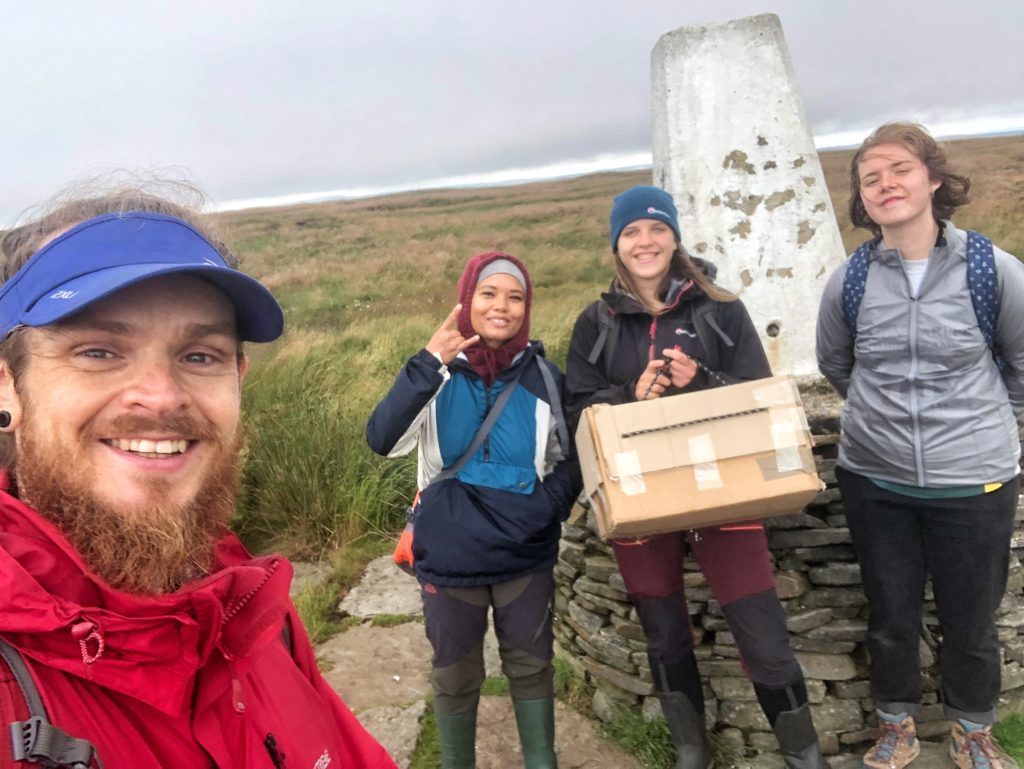22 July 2022
THIS IS NOT THE END…
This is the final blog post of my work placement but I’m happy to say that I will be continuing to volunteer my time with RSPB Dove Stone henceforth. I feel that I have learnt so much, gained valuable experience and have met some fantastic people along the way, both staff and volunteers. This role has given me opportunities and flexibility to develop in directions which are most relevant to my interests, whilst also knowing that I’m making a positive difference.
Some of the major things I’ve gained through this placement are:
• A thorough understanding of peatland restoration, from the theory of peatbog ecosystems to the methods of management and monitoring.
• An appreciation of the behind-the-scenes efforts required to manage such a site.
• A better understanding of how funding and employment works in comparison to the commercial sector.
• Practical experience of restoration and surveying methods, volunteer management, GIS data analysis, application submission, information presentation, and research.
• Strong legs from walking for many, many miles over hills and rugged terrain!

CONSERVATION VS. RECREATION
There is so much more I could talk about but I thought I’d share a few final observations from my time here regarding site management
One challenge of managing a site like RSPB Dove Stone is balancing the needs of public access with the needs of conservation. However, these two factors are not mutually exclusive. For example:
1. Members of the public using peatlands recreationally contributes economically to those managing the site as well as the wider community through tourism. It also helps people appreciate and therefore look after the environment better.
2. Conservation management helps provide ecosystem services to the public, such as flood mitigation, improved water quality and mitigation of climate change. Regarding flood mitigation, it is far more cost effective to combat the issue of flooding at the source by restoring peatlands, than it is to build flood defences downstream to manage the symptom.
Public access does come with its downsides however. Namely through fire risk, littering, and damage to peat by foot or even illegal trespass with off-road vehicles.
FIRE!
Several new Volunteer Fire Rangers have been recruited to engage with the public and spot potential fires in their infancy, especially during warmer periods when a large number of members of the public visit the area, bringing with them the risk of fire through ‘small incendiary devices’ such as disposable barbeques, campfires and cigarette butts. I have has several conversations with the Fire Rangers to hear their experiences. One told me that most of his time so far has consisted of engaging with the public around the tourist hotspots (no pun intended), educating them about the risks and restrictions, and preventing incidents before they occur. I too have found myself speaking with the public about fire risk when on site and have even politely convinced a pair of off-road motorcyclists to leave the site and find somewhere more suitable.
There is the significant issue that multiple wildfire have been shown to be the result of intentional arson. However, without official evidence available, I wouldn’t like to speculate and point blame.
On a completely unrelated note, there are shooting estates in the near vicinity, with workers who have been seen trespassing on site when and where wildfires have occurred. Probably unrelated.

